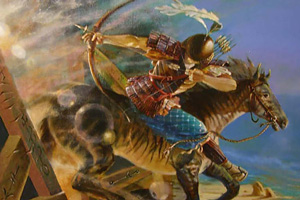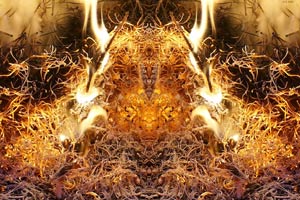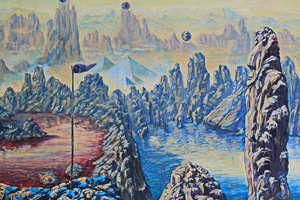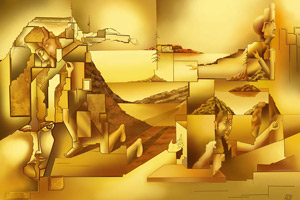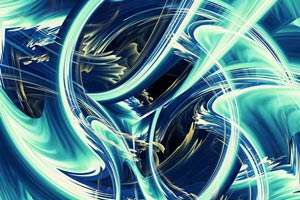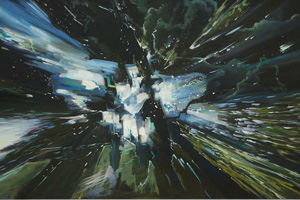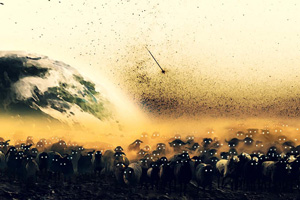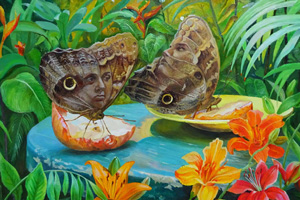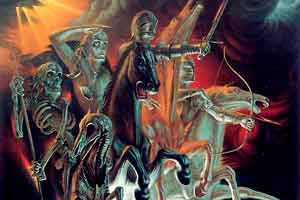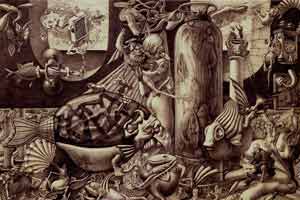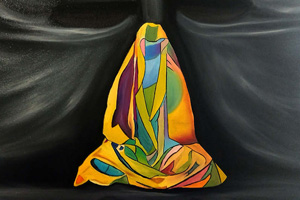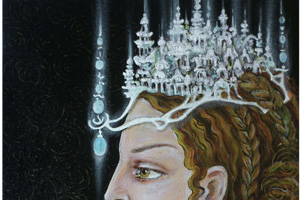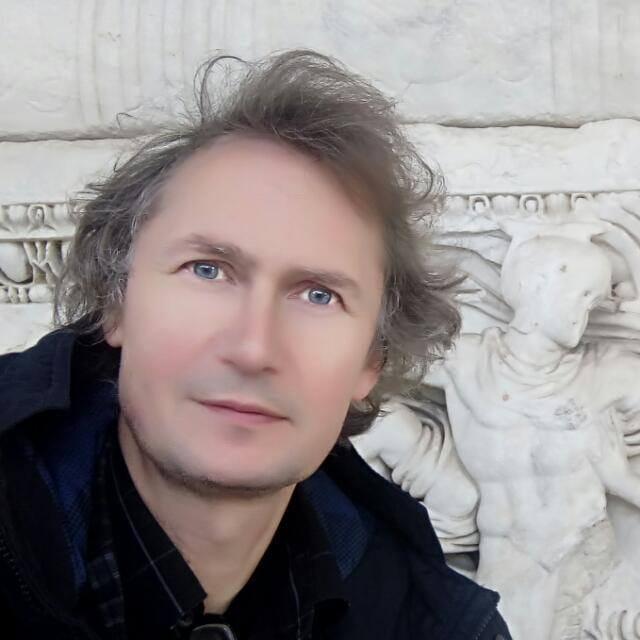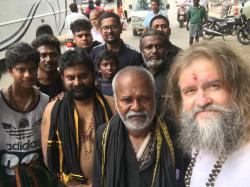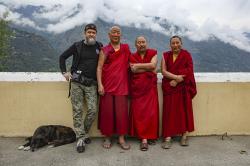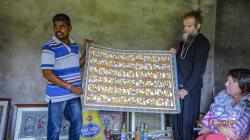About the Zen Art
- Category: Entry Rules
- Hits: 17885
If the originality of European painting determined the use of a linear perspective, then the eastern (China, Japan) - was strongly influenced by the spirit of Zen.If the originality of European painting determined the use of a linear perspective, then the eastern (China, Japan) - was strongly influenced by the spirit of Zen. Read about what it is in this post.
What is Zen
Zen Buddhism is neither religion nor philosophy, nor psychology nor science. It is a way of life and a view of life, an example of what is called the “path of liberation” in India and China. This is the acceptance of the naturalness and spontaneity of life in all its causelessness and fluidity.
The essence of Zen Buddhism is very difficult to convey in words. It is the sense of peace as it is, not artificially divided into objects and actions, into bad and good. Just as a coin, it is what is concluded between an obverse and a reverse, so the world is that elusive “between”.
The manifestations of Zen in art
Naturalness and spontaneity
From a Buddhist point of view, every moment is self-sufficient and does not need to be justified by some external purpose. Such a life is beautiful - it is consonant with the freedom of clouds and mountain streams wandering everywhere, flowers in inaccessible gorges, whose beauty no one sees, and an ocean surf, forever washing the coastal sand.
Therefore, in life and in art, the cultural tradition of the Far East most of all values naturalness and spontaneity (zu-jen). This is the unmistakable sound of sincerity, characteristic of the action of ill-conceived, direct.
Guided Chance
Pictures form as naturally as the rocks and grass that they depict. This does not mean that the art form of Zen is created purely by chance, and the picture can be created by a snake, which was dipped in ink and then left to wriggle on a sheet of paper. Rather, for Zen there is no dualism or contradiction between the natural element of chance and the human element of control.
Slowness
Since the world is not going anywhere, there is nowhere to hurry. Everything can be taken easily, as nature itself does. Hence the principle: haste and everything connected with it are destructive. The lack of rush is also associated with a certain non-interference in the natural course of events.
At the junction of genres - calligraphy
The calligraphic style of painting was closest to the attitude of Zen - it was usually a drawing and a poem beneath it, made in black ink on silk or paper. The East was not characterized by a strict distinction between specialties - writing and poetry were one of the main occupations of Chinese scientists, and Chinese painting is very close to calligraphy. Therefore, often a scientist, artist and poet were combined in one person.
The originality of the genre was also influenced by the materials used. Chinese black mascara conveys a wide variety of tones depending on the amount of water added, and the mascara itself has an extraordinary richness of color shades of black. Since the touch of the brush is light and smooth, and in order for the mascara to flow evenly from it, it should easily slide on absorbent paper, using the brush requires special ease in the movements of the hand, brush and shoulder, more like dancing than drawing letters on paper.
As a result, a special genre of painting was born in the East, which was later called sumi-e.
Sumi-e
In Chinese painting, this style reached its peak during the Song Dynasty (959-1279) and is represented by artists such as Xia Gui, Ma-yuan, My Qi and Liang Kai. In Japan, he received the name Sumi-e.
Masters of the Song era were primarily landscape painters and created a style of "painting of nature" that was hardly surpassed anywhere in the world. They paint nature for us: mountains, waters, fog, rocks, trees and birds - just like Zen Buddhist or Taoist feels her life. This is the world to which a person belongs without dominating him. This world is self-sufficient, it was not “created for” anyone and has no purpose.
Song landscapes are not at all as fantastic and stylized as Western critics think. When you go to similar places in the mountainous terrain, this kind of thing opens up at every turn of the road, and only a photographer is not enough to take a picture exactly resembling Chinese painting. A striking feature of the Song landscapes, like sumi-e as a whole, is the comparative void of the picture - a void, which, however, looks like part of the picture, and not just an unpainted background. Filling one corner of the sheet, the artist enlivens the entire surface of the painting.
The technical skill of the artist, the variety of brush movements, from full subtle grace to crude vitality. This brush carefully paints out all the details of the tree, then it sketches out only general outlines and masses, the texture of which is created by “controllable randomness” - disheveled brush hairs and uneven ink coloring of the paper. The secret of this technique lies in the ability to balance the form with empty space and, most importantly, to feel the moment when it is “said” enough.
The western eye in these paintings is immediately struck by the lack of symmetry - the consistent deviation from regular and geometric shapes - and straight and curved. A line drawn with a brush is usually jagged, angular, oddly curved, intermittent, or swiftly smooth, but always more spontaneous than predictable.
Moods of Furyu
A purposeless existence is a constant theme in all genres of Zen art and expresses the inner state of the artist himself, who goes nowhere and exists outside of Time.
This feeling is sometimes found on ordinary people, and it is precisely in such moments that they perceive those dazzling glimpses of the universe that illuminate in memory randomly turned up images: the smell of burning leaves at the dawn of a foggy autumn morning, the flight of pigeons in the ray of the sun against a cloud or a lonely cry of a bird in the thicket of the forest. In Zen art, any landscape, any sketch of bamboo swayed by the wind, or lonely rocks is an echo of such moments.
If the mood of this instant expresses loneliness and peace, it is called sabi.
If an artist feels depressed or sad and with such a special kind of emptiness of feelings briefly notices something ordinary and natural in all of his inexpressible “suchness”, such a mood is called a wabi.
If an instant causes a stronger nostalgic sadness associated with autumn and the feeling of dying of the world, then it is called avare.
When something mystical and strange appears in what he saw, as if a hint of something unknown and eternally inaccessible, such a mood is called yugen.
These completely untranslatable Japanese words describe the four main moods of Furyu, i.e. the general atmosphere of Zen "taste" in such "aimless" moments of life.
Haiga and zenga
By the beginning of the 17th century, Japanese artists had developed an even more meaningful and “improvisational” style of sumi-e, called haiga, which was an illustration of haiku poems. This genre evolved from zeng — the laid-back sketches of Zen monks that served as illustrations for verses or sayings.
Dzenga is drawing Chinese jeroglyphs, circles, branches of bamboo, birds and human figures with these free and powerful swings of brush that seem still full of movement when the stroke is already applied. One of the most common motives of dzeng is the circle. But even such a seemingly simple figure is full of expressiveness - this circle is not only slightly shifted and curved, but the texture of the lines itself is full of life and tension, with random splashes and gaps from the movement of a rough brush.
So an abstract or "ideal" circle becomes a concrete and natural, living circle just as rocks and trees, clouds and waters seem more like themselves to the Chinese eye, and least of all they resemble the shapes of geometry and architect.
Dzenga and haiga are the most "extreme" expressions of sumi-e style - here it is the most organic, undisturbed and unobserved and full of those "controlled accidents" of the brush, which embody the amazing "senseless" nature itself.





